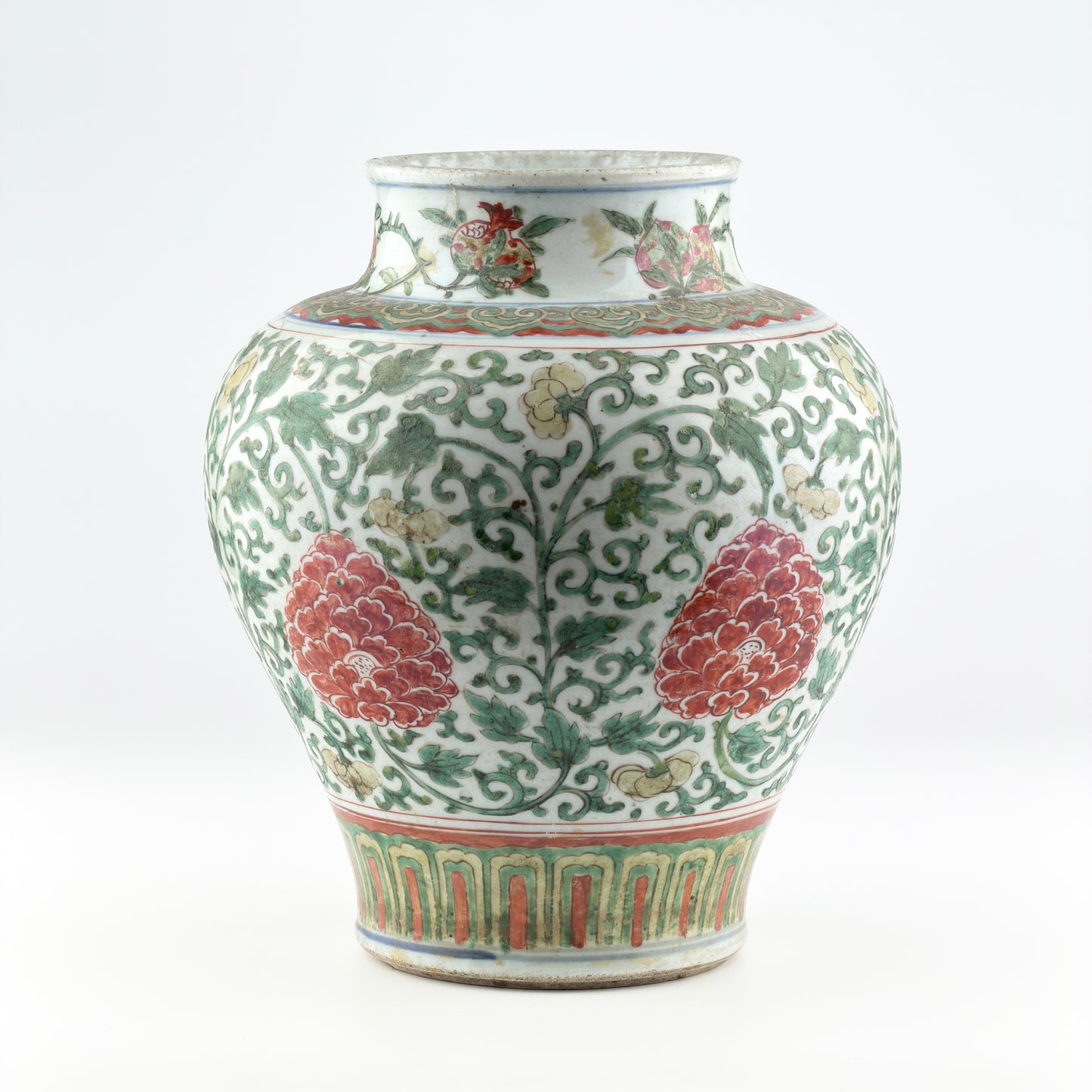A Wucai 'Peony' Vase Transitional Period, 17th century, Transitional period(Ming Dynasty)
A Wucai 'Peony' Vase Transitional Period, 17th century, Transitional period(Ming Dynasty)
Couldn't load pickup availability
The jar features a balanced and robust form, typical of the Transitional period, which was a time of significant change and innovation in Chinese porcelain art. The decoration is exuberant, with bold red and green colors dominating the palette, accompanied by accents of yellow, blue, and other hues to complete the 'five colors' scheme.
A large peony, which is a frequent motif in Chinese art symbolizing wealth and honor, is prominently displayed in a bright red tone, contrasting with the green foliage. The peony is surrounded by intricate scrollwork and smaller floral motifs, indicative of the sophisticated and detailed painting style of the era.
Period : Late Ming-Early Qing Dynasty
Production Date : 17th century
Size : 28cm (Height), 13.0cm(Diameter)
Condition : Good(Minor Repairs on neck part)
* Wu Cai
Wucai, which literally means "five colors," is a distinctive style of Chinese porcelain decoration that flourished during the Ming (1368-1644) and Qing (1644-1912) dynasties. The wucai technique involves the use of a palette of typically five overglaze enamel colors – red, green, yellow, blue, and purple – to embellish porcelain wares. The colors are applied to an already glazed and fired piece of porcelain, which is then fired again at a lower temperature to fuse the enamels to the surface.
The wucai style is noted for its vibrant and harmonious blend of colors, which are used to create intricate and lively decorative patterns. These patterns often feature motifs from nature, such as flowers, fruits, animals, and landscapes, as well as scenes from literature and mythology. The style is also characterized by a dynamic sense of movement and an emphasis on artistic expression and detail.
Wucai porcelain was highly valued for its artistic complexity and was used for a wide range of items, from imperial wares intended for the court to pieces produced for domestic use and export. The technical proficiency required for wucai decoration made it a symbol of the potters' craftsmanship and the rich cultural heritage of Chinese ceramics.


















